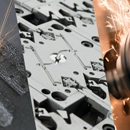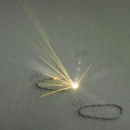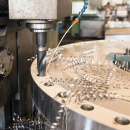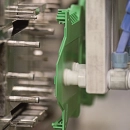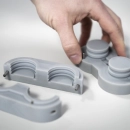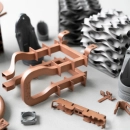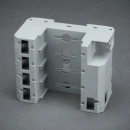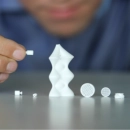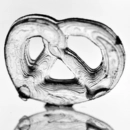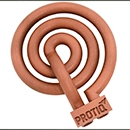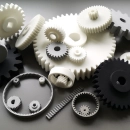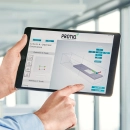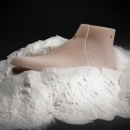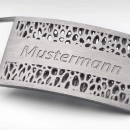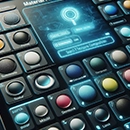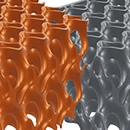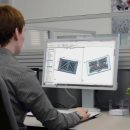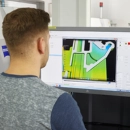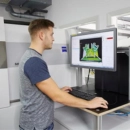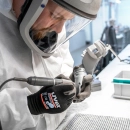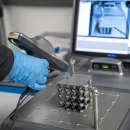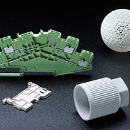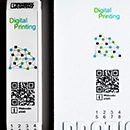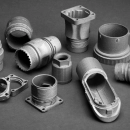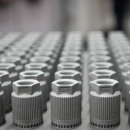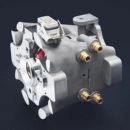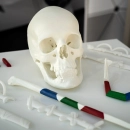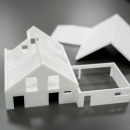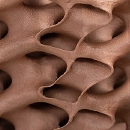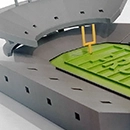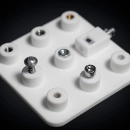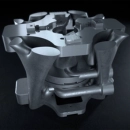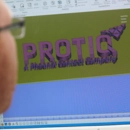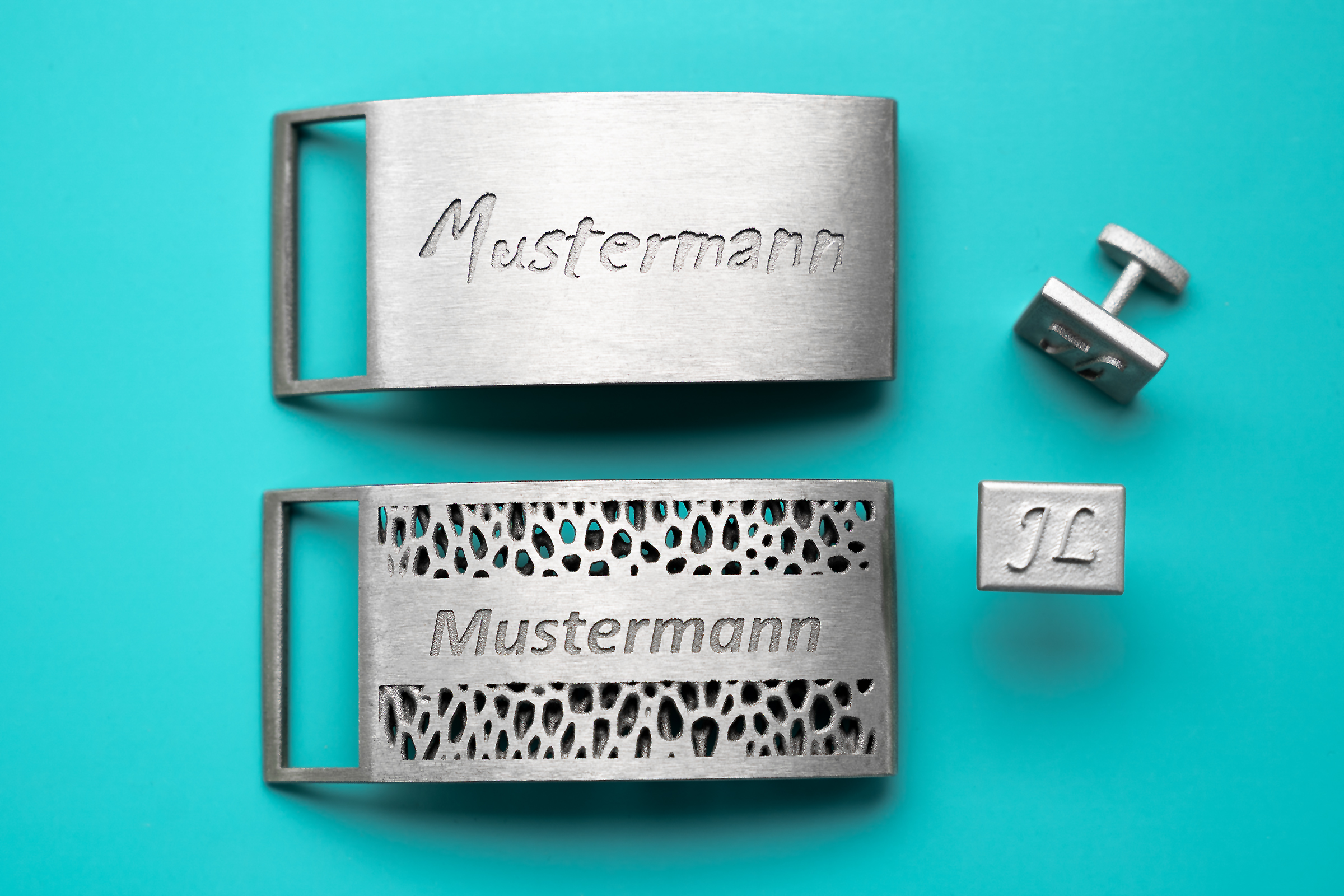3D-printed jewelry
3D printed jewelry is revolutionizing jewelry design by offering designers the opportunity to create highly complex and individual pieces that would be difficult or time-consuming to create using traditional manufacturing methods.From idea to unique piece: jewelry in a new dimension
Brilliant freedom through 3D printing
3D printing has fundamentally changed the world of jewelry in recent years. Instead of relying exclusively on traditional methods such as casting, forging or engraving, additive manufacturing enables a completely new approach. From a digital design, a piece of jewelry is created layer by layer, which can be designed almost indefinitely in terms of shape and fineness.
What is particularly exciting is that designers gain the freedom to implement structures and geometries that were previously almost impossible to realize technically. Intricate details, organic shapes or complex patterns can be produced with the utmost precision. At the same time, the path from the idea to the finished piece of jewelry is significantly shorter, as designs are created directly from the digital template and do not have to be transferred to complex tools or moulds.
This opens up a whole new dimension of individualization for jewelry lovers. Whether it's a modern statement piece, a personalized gift or an exclusive one-off - each piece can be designed exactly according to personal style. 3D printing thus combines technological innovation with the age-old fascination for jewelry and creates a symbiosis of craftsmanship and digital creativity.
Advantages of 3D printing for jewelry
- High degree of design freedom and customization options
- Fast prototype development
- Time and therefore cost savings
- Wide range of materials, including metals, plastics and ceramics
- Easy accessibility for designers through our online platform
How does additive manufacturing of jewelry work?
1. Design phase
The first step is to create a digital 3D model of the piece of jewelry using computer-aided design (CAD) software. This software enables designers to accurately create complex geometries and the finest details. Alternatively, our free configurators for belt buckles or cufflinks can also be used: Customizable products >
2. Preparation for printing
Once we have received the 3D data, our experts carefully check the file for printability and optimum alignment. The model is then prepared for the printing process. As soon as everything fits, we transfer the file to our 3D printing systems and start the production process.
3. 3D printing
Depending on the material and design, a suitable 3D printing process is used - for example, selective laser melting (SLM) for metal. In this process, the piece of jewelry is built up layer by layer from metal powder: A precise laser melts the powder exactly where it corresponds to the digital model. This creates a detailed and high-quality piece of jewelry directly from the raw material.
4. Post-processing
After printing, each piece of jewelry is carefully finished. Depending on the material and design, this may include removing support structures, smoothing surfaces or polishing for the perfect shine. Only when everything meets our quality standards is the piece of jewelry securely packaged and sent to our customers.
Rapid prototyping for jewelry
Prototyping is an essential part of the product development process, especially in creative and technical fields such as jewelry design. A prototype is a preliminary model that is used to test and refine aspects such as design, functionality and user-friendliness before the product ultimately goes into mass production.
There are different types of prototypes, each with different objectives. Visual prototypes focus on the aesthetic features of a product, while functional prototypes aim to test specific functions and mechanisms. Digital prototypes are often created in CAD software and provide a virtual simulation of the product, allowing designers and engineers to implement concept changes quickly and cost-effectively.
In the jewelry industry, the use of 3D printing technologies enables fast and accurate rapid prototyping that includes both functional and visual testing. The choice of materials is flexible, but can include lower cost materials in the early stages to verify initial designs.
Prototyping offers the advantage of identifying design flaws early, which ultimately minimizes costly revisions. By testing and gathering feedback, the design can be optimized before it goes into final production. This is achieved through an iterative process that includes multiple passes of building, testing and adapting.
Although prototyping itself can be a costly phase of product development, it often reduces overall costs by avoiding expensive errors in mass production. It also enables customer feedback to be incorporated into the development process, which in turn leads to higher customer satisfaction and products that are better suited to the market.
Photo: PROTIQ produced prototypes for smart jewelry bracelets for LAEMON. Read more in this article >
Laser melting – from powder to jewelry
Selective laser melting (SLM) is ideal for the production of high-quality individual pieces made of stainless steel - for example, customizable belt buckles. The layer-by-layer construction directly from metal powder means that even complex designs with fine details and clear edges can be realized. Logos, lettering or special shapes can be implemented directly from the digital template - without any molds or tools.
Durable quality straight from the printer
Stainless steel is not only corrosion-resistant and resilient, the SLM process also gives it a particularly precise and high-quality surface. After printing, the pieces are carefully finished and refined so that they are both functional and visually appealing. Belt buckles are just one example - the process is suitable for many other jewelry and design objects.
Frequently asked questions about 3D-printed jewelry
How long does it take to print and finish a piece of jewelry?
Is 3D-printed jewelry just as durable as traditionally made jewelry?
Which metallic materials does the PROTIQ Marketplace offer?
The PROTIQ marketplace currently offers over 150 different materials, including copper, brass, aluminum and stainless steel, for example. To view all materials, simply upload your 3D data on our homepage and go to the material selection.
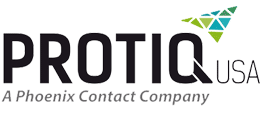


 Deutsch
Deutsch English
English Italiano
Italiano